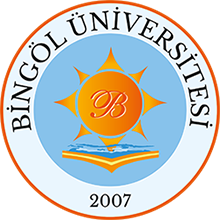Insecticidal activities of wild type and recombinant invertebrate iridescent viruses on five common pests
Tarih
2020Yazar
Gencer, Donus and Yesilyurt, Aydin and Gullu, Mustafa and Demir, Ismail
and Nalcacioglu, Remziye
Üst veri
Tüm öğe kaydını gösterÖzet
Invertebrate iridescent virus 6 (IIV6) can infect a broad range of pest
insect species. Viruses with new features created by recombinant DNA
technology can be used effectively as biological control agents.
Previously, recombinants have been constructed: IIVs harboring green
fluorescent protein gene (gfp) in place of IIV6 157L ORF (rCIV-Delta
157L-gfp) and a scorpion Androctonus australis (Linnaeus, 1758) insect
toxin gene (AaIT) fused with gfp (rCIV-Delta 157L/gfp-AaIT). In this
study, wild type IIV6 and the two recombinants, were evaluated for their
ability to cause infections on Helicoverpa armigera (Hubner, 1805)
(Lepidoptera: Noctuidae), Spodoptera littoralis (Boisduval, 1883)
(Lepidoptera: Noctuidae), Lymantria dispar (Linnaeus, 1758)
(Lepidoptera: Erebidae), Euproctis chtysorrhoea (Linnaeus, 1758)
(Lepidoptera: Erebidae) and Tenebrio molitor (Linnaeus, 1758)
(Coleoptera: Tenebrionidae) larvae. This study was performed at
Karadeniz Technical University, Department of Biology during 2018 and
2019. Five different concentrations (10(3), 10(4), 10(5), 10(6) and
10(7) TCID50/ml) of viruses were used to inject each insect larvae. All
larvae, infected with rCIV-Delta 157L/gfp-AaIT, became paralyzed, except
S. littoralis. The LC50 of insect larvae infected by rCIV-Delta
157L/gfp-AaIT were determined as 0.3 x 10(7), 0.7 x 10(5), 0.2 x 10(5),
0.15 x 10(5), 0.7 x 10(4) TC1D(50)/ml on S. littoralis, T. molitor, L.
dispar, H. amiigera and E. chtysorrhoea, respectively. LT50 values,
calculated according to the highest virus concentrations, were found as
10.5, 6.2, 4.7, 7.5 and 5 d on S. littoralis, T. molitor, L. dispar, H.
armigera and E. chrysorrhoea, respectively, for rCIV-Delta
157L/gfp-AaIT. This study showed that recombinant IIV6 has increased
pathogenicity on some insects from Lepidoptera and Coleoptera.
Koleksiyonlar

DSpace@BİNGÖL by Bingöl University Institutional Repository is licensed under a Creative Commons Attribution-NonCommercial-NoDerivs 4.0 Unported License..













